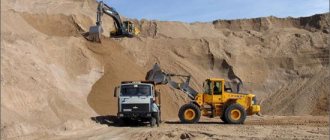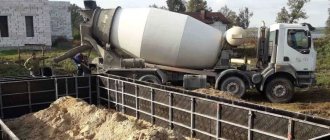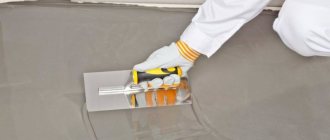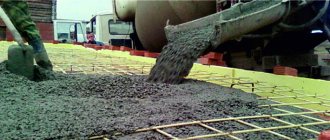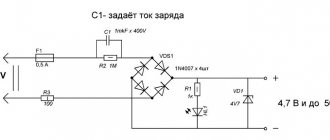How does concrete gain strength?
Strength gain occurs through a chemical reaction of cement with water, which is called hydration. After pouring the concrete mixture, hydration takes place in two stages. At the very beginning, setting occurs, which usually lasts about 24 hours. After setting, the mixture begins to harden. Hardening is a long process that can last for 12-36 months. Concrete gains most of its strength within the first 28 days (at optimal environmental conditions).
For concrete hydration to be successful, the mixture must be properly prepared. It is required to combine water, cement, sand and crushed stone in the required proportions. During construction, it is necessary to take into account that there are factors that influence the rate of hardening of the mixture. Environmental conditions can either speed up or slow down curing.
Factors affecting the hardening of cement mortar
To gain maximum strength, you need to reduce the negative impact to a minimum. Among the parameters influencing hardening:
- Humidity – optimal values are at least 90%. To regulate it, the concrete foundation can be covered with wet sawdust, watered with a watering can, or covered with film. As concrete dries, it shrinks in size. If the process is uneven, the top layers will contain cracks. This will negatively affect the strength of the structure.
- Outdoors, the presence of wind can negatively affect durability. Under sunlight and gusts of wind, the outer parts will dry out faster and gain less strength than the inner parts. To protect against negative influences, the foundation is covered with film or burlap.
- Temperature – optimal 20 +/- 10 degrees. If concreting occurs at sub-zero temperatures, salt, potassium chloride and others are added to achieve normal hardness. But more often, heat guns are used on construction sites to make the process go more evenly. In severe frost, mats are placed on the foundation to maintain the temperature. In hot weather, the water will evaporate quickly, and the desired chemical reaction will not have time to occur. Trying to increase the moisture content of concrete.
- Composition of the mixture - the higher the grade, the more cement in the solution and the faster it hardens. Various additives can speed up the process - potassium chloride, sodium sulfate.
- The presence of air bubbles - thrombosis manually, with a vibrating plate or by bayoneting with a shovel helps get rid of them.
What factors influence hardening?
Among the main factors are:
- temperature conditions;
- brand of cement used;
- humidity level.
Hardening under unfavorable conditions can lead to cracks appearing under load. Source 1beton.info
The higher the temperature outside or indoors, the faster the mixture gains its strength. When the temperature drops below 0 degrees, the hydration process stops. Many builders consider the optimal temperature for pouring concrete to be between 18 and 22 degrees.
The grade of concrete is designated by the letter M. The value of the grade can vary from 50 to 800. The higher the indicator, the stronger the concrete is considered and the less time it takes to harden. Even though higher grades cure faster, it is still recommended to cure them for at least 4 weeks before loading.
The level of environmental humidity directly affects the hydration process. At very low humidity, hardening slows down. At very high humidity it accelerates. Normal concrete strength gains occur at a humidity of about 80-100%.
Process Features
This material contains a hardening table and detailed information on how to increase the hardening rate of concrete. This table will help you when determining the timing of work.
Scheme of formwork for pouring.
Hardening after pouring is an inevitable process. The quality of the product that was poured will directly depend on the activities that were carried out at the time of hardening of the mixture.
After the beginning of setting and laying, the mixture must stand in conditions that can provide the required strength and quality.
Hardening is a rather complex physical and chemical process. It occurs when water and cement interact. Water will penetrate into the cement particles gradually, and therefore the hardening rate will be quite low. In order to produce high-strength concrete, good hardening conditions must be created. Such conditions include relative humidity of the surrounding air of no less than 90% and positive temperature (18-22°C). These hardening conditions can be created in a special chamber or achieved by backfilling with sawdust or moistened sand.
Table of proportions.
During the hardening process in a humid environment, its strength will be much higher than when hardening it in the open air, because in the second case, the water from the mixture will completely evaporate, and this will lead to the fact that the mixture will not receive the required strength, therefore, such a hardening process cannot be considered quality. This may occur due to the fact that the core of many cement grains may not have time to enter into a chemical reaction with water. Therefore, premature drying should not be allowed.
In summer and spring, in order to retain moisture, bitumen emulsion should be applied to its surface, in addition, the concrete should be covered with plastic films.
The increase in strength will directly depend on the hardening temperature. If the temperature is below normal, hardening will slow down, and if there is a sub-zero temperature, hardening will stop altogether. With increased humidity and temperature, this process will occur somewhat faster. Under normal hardening conditions, after 7-14 days of preparation, concrete can reach 60-70% of its own 28-day strength.
During the hardening process, its volume will change because the mixture, as it hardens, will shrink. Shrinkage in the surface zones may occur somewhat faster than in the internal zones, therefore, if there is a lack of moisture during hardening, shrinkage cracks may begin to appear on the surface. Small cracks, which reduce strength and quality, can also occur due to uneven heating of the block during the process of heat release during cement setting.
Strengthening schedule
The hardening schedule was created based on measurements of the strength of concrete at different stages of hardening and under different environmental conditions.
Strength gain chart Source aquagroup.ru
By studying the graph of concrete strength gain, you can understand how the hardening of the poured structure will proceed at a given temperature.
For normal hardening, optimal environmental conditions must be created or selected. It is recommended to carry out work on pouring the foundation and creating other concrete structures in the summer.
If pouring is carried out in winter, then it will be necessary to artificially create favorable conditions through the use of greenhouses, waterproofing and heat guns. It is worth noting that filling in the winter, in compliance with all technologies, is much more expensive than a similar procedure in the summer.
See also: Catalog of popular projects of reinforced concrete and foam concrete houses - from construction companies presented at the exhibition of houses "Low-Rise Country".
Caring for concrete after pouring
Any concrete mixture requires proper care after pouring. First of all, it is necessary to provide suitable conditions for a normal chemical reaction between water and binder components. If the basic rules are followed, the solution becomes strong and solid. The specifics of care directly depend on the time of year when the installation was performed.
Experts do not recommend carrying out construction work in the heat, so it is better to start it in the morning or evening, after sunset. If pouring is done during the day, it is necessary to provide good protection from ultraviolet radiation by covering the layer with roofing felt, slate sheets or other covering material.
Aftercare is to protect the surface from erosion and holes. When performing independent mixing, it is necessary to adhere to the requirements of SNiP and not allow long pauses between activities. In summer, the mixtures dry quite quickly, so any downtime is contraindicated. Otherwise, the solution will become unusable.
In hot weather, the mixture must be regularly moistened with water and adhere to technological standards that prevent the evaporation of the liquid.
If the outside temperature is more than 15°C, water must be added to the composition every 10-12 hours. In windy weather - after 2-3 hours.
There are no special difficulties in caring for the poured base. The main thing is to maintain optimal humidity and temperature during the setting and hardening stage of the mixture.
Video description
Watch the video to see how long the foundation should stand:
When creating the foundation of houses, collapsible wooden formwork is most often used
After pouring concrete and initial setting, the formwork is not dismantled for at least a week. In rare cases, the formwork remains in place for most of the concrete hardening time. After 7-10 days, the formwork is usually dismantled. Dismantling is carried out in such a way as not to damage the integrity of the structure. If the structure was installed taking into account all the rules and regulations, then there will be no problems with dismantling.
Before assembling the formwork, it is necessary to carry out preparatory work, including digging a trench (if you plan to create a strip foundation). The mixture is prepared immediately before pouring, when the formwork has already been assembled.
See also: Catalog of construction companies that specialize in foundations and facade materials.
How long does it take for a concrete foundation to set and dry?
The strength of concrete increases daily according to the following scheme:
- primary setting (the process begins in 10-20 minutes and is completed within 24 hours);
- hardening (this stage takes about 1 month).
At temperatures above 20 degrees, the strength of the foundation on day 3 is about 50%.
Immediately after pouring, the foundation must be leveled Source postroifundament.ru
Leveling is carried out while the mixture is still liquid. Builders act quickly, as signs of setting become noticeable within the first hour after pouring.
How can you influence the time it takes for cement to gain strength and provide conditions for drying?
There are many ways to influence the rate of hardening and reduce the amount of time it takes for cement to dry. Among the main methods are:
- the use of special additives to accelerate hardening;
- the use of special types of concrete that gain strength faster;
- creating more favorable conditions for gaining strength.
If the environmental humidity decreases, then it is necessary to increase it artificially. In order for the concrete to gain maximum strength at low humidity, watering is carried out with running water. At a temperature of 20-25 degrees and a humidity of 85-100%, no additional conditions for drying are required.
Watering can be done with a hose Source pixabay.com
How to measure the strength of concrete
To measure the strength of concrete, you can use one of the following methods:
- Prepare a sample for measurements in advance. For this method, a concrete blank is prepared, which after a certain period of time will be subjected to a series of tests. The workpiece is placed in the same conditions as the main concrete structure.
- Use of ultrasonic devices for assessing the strength of concrete. The most popular method used in the construction of large construction projects. The operating principle of an ultrasonic device is extremely simple: the stronger the concrete, the faster the ultrasonic waves move inside it.
If you use an ultrasonic strength meter, you will not need to use various formulas to find out how long concrete hardens. The structure will be subjected to load immediately after obtaining the required strength indicators.
Using a special device, it is possible to measure strength indicators in the shortest possible time Source stefs.ru
Polymerization of concrete
Concrete hardening is carried out due to hydration - a special chemical reaction that occurs between binder components and water. The process is intended to convert the base raw material (cement-sand mixture with crushed stone and sand) into calcium hydrosilicate. At the end of the hardening period, a monolithic base with increased strength properties is created.
The hardening time of concrete is determined by the following factors:
- Brand of cement mixture.
- Proportions and ratio of components in the solution.
- Indicators of atmospheric humidity.
- Production technology.
- Ambient temperature.
- Thickness and density of concrete pouring.
- Compliance with the rules for caring for the solution during the hardening process.
For complete polymerization, two stages are involved:
- Grasping.
- Set of declared strength.
When determining how long concrete takes to dry, it is important to consider the brand of cement that was used when mixing the mixture. The M500 model is characterized by the greatest reliability, and the M100 has the minimum strength.
The hardening time of concrete is determined by the proportions of the components and the presence of various fillers in the composition. The more sand or gravel there is in the solution, the faster the excess liquid will come out of it. If you use a large amount of expanded clay and slag, the water will begin to evaporate more slowly.
If the placement density is not observed, the strength properties of the concrete mixture will be reduced. When constructing industrial facilities, concrete is additionally compacted using vibrocompression. At home, the procedure is replaced by simple compaction with hand tools.
To retain moisture in the mixture, it must be covered with a waterproofing film. It can be polyethylene or bitumen mastic. The purpose of such materials is to enhance hydration and protect the solution from rapid loss of liquid.
Grasping
Setting of concrete is the first stage of its polymerization and takes no more than 1-2.5 hours. The exact interval is determined by the temperature conditions under which the work is performed:
- If the ambient temperature is +20°C, the chemical reaction will start 100-120 minutes after pouring the mixture into the formwork. Then the composition will dry for another hour.
- At a temperature of +1...+19°C, setting will occur in 3-5 hours.
- At zero temperature, the reaction begins 7-10 hours after mixing. In this case, the drying time will be 16-20 hours.
If there is a negative temperature at the construction site, the components of the mixture will no longer enter into the process of hydration with water, and the mixture will not be able to dry. It will remain inert until temperatures rise above 0°C. To get rid of this phenomenon, you can add special fillers to the concrete composition that accelerate hydration, or build insulated formwork.
If it is hot enough outside (above +30°C), the setting time of the concrete will be reduced, but the quality of the final product will decrease. This is due to the rapid evaporation of moisture and deterioration of the strength properties of concrete products.
During hot periods, special fillers are added to the mixture, which increase the hardening time of concrete.
Among them:
- Acid NTF.
- Sugar feed molasses.
- Sodium gluconate.
- Complex compositions.
- Other additives.
Curing time
After setting, the concrete hardening process begins. It consists in the occurrence of a chemical reaction between cement granules and the liquid from the solution. The best hydration rates are observed at air humidity of 75% and at a temperature of +15...20°C.
If the temperature remains below +10°C, special anti-frost components will need to be added to the composition. Otherwise, the concrete will not receive its design strength.
Briefly about the main thing
When contacting a construction company to create a turnkey house or just a foundation, many people are extremely concerned about the timing of the work.
Having learned how long concrete takes to dry, the owner of the future home will competently plan the delivery time of building materials and negotiate with contractors.
The drying speed of concrete can be influenced by increasing air humidity and creating other favorable conditions. The drying process also depends on the brand of specific concrete; this also needs to be taken into account when designing the foundation, walls and ceilings.
Ratings 0
What is "concrete"
Before answering the question “how long does it take for concrete to dry in formwork”, you need to have a complete understanding of what is included in the concrete mixture:
- Cement.
- Water.
- Clean sand.
- Required filler (stone fraction - crushed stone, gravel).
Concrete production must be continuous and dynamic because hardening begins the moment the materials come into contact with water. Delay can lead to partial setting and a decrease in the quality of the mixture, up to complete unsuitability for use in construction.
Concrete composition
Water actively interacts with cement and forms a thickening mass. The molecules gradually penetrate into the cement grains. Minerals react and create a completely new compound that has a new set of properties and characteristics.
